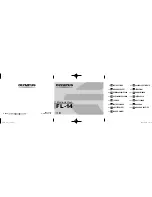
Triggering
222
Alvium CSI-2 Cameras User Guide V2.8.1
Trigger latency
In theory, a trigger creates an immediate response of the camera, depending on
the cable length. In practice, the computer may add a delay that is mostly
unpredictable. In addition, camera electronics and sensors have a delay.
Rolling shutter (RS) cameras in this document also have exposure delay, depending
on camera settings, see
Triggering with rolling shutter cameras
Triggering with rolling shutter cameras
This section describes triggering behavior for
1500 C-210m/c
and
C-500m/c,
and
for
1800 C-1240m/c
and
C-2050m/c
triggers exposure and readout for cameras with rolling shutter (RS) sensors. Like for
global shutter (GS) sensors, readout has a constant duration, acquisition must be
active to enable exposure, the end of exposure starts readout.
Rolling shutter (RS) sensors run in cycles where
readout area
equals
exposure area
.
Overlapping triggering is not supported. If exposure time is shorter than readout
time, exposure starts with a delay:
Exposure start delay
=
exposure area
– exposure time.
Term
Description
External signal
Electrical trigger signal starting the signal flow
Exposure Active
Exposing a frame
Readout Active
Reading out a frame
Frame Start Trigger Wait
Waiting for a trigger
Acquisition Active
Enables frame acquisition: Expose, read out data, or wait for triggers.
Table 113: Trigger signal flow, legend
Trigger features and UserSetDefault
See
Trigger features and UserSetDefault
Signals and controls
The signals displayed in
represent logical states, not user controls.
GenICam
for CSI-2
Access
















































